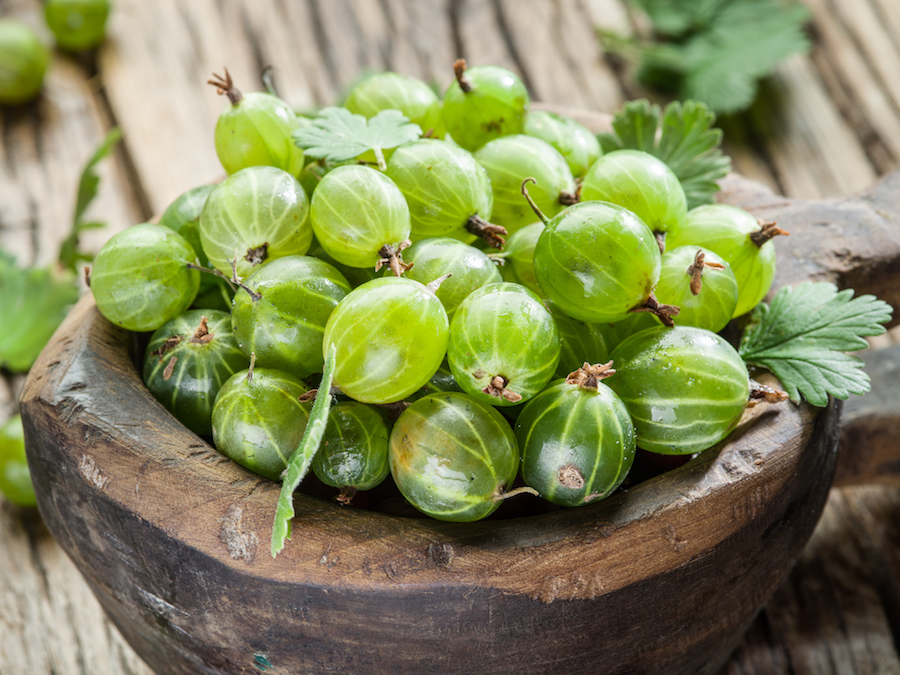Making tarts, crumbles and jams? Why not grow your own gooseberries?
Want an easy-to-grow fruit to put into mouth-watering crumbles and creamy fools? Follow our guide to growing gooseberries.
Gooseberries have long been grown for their sharp flavour, which is ideal in tarts, crumbles and jams. And with improved breeding work, growers have improved mildew resistance and increased the quality of the fruit as well as coming up with less thorny bushes.
But how should you grow them? Markus Kobelt, founder of fruit specialist Lubera, offers the following tips.
When should you plant them and where?

Dig a deep hole
Gooseberries in containers can be planted all year long, but autumn is the ideal time. They can be planted in full sun or partial shade and are hardy and happy in almost any type of soil. After removing weeds and breaking up the soil, dig a hole for planting. Put compost in the hole and add fertiliser.
Let new shoots develop

Gooseberry planting
If you are planting bushes, loosen the roots when you remove them from their containers and plant them in a hole double the size of the rootball, planting 5-10cm deeper than the surface of the container. This encourages new shoots to develop from the ground in later years, which are the base for quality production. Plant these gooseberry plants around 1.2m (4ft) apart. Water them in well.

Gooseberry ‘Mr Green’
Plant bare root gooseberries between late autumn and early spring, spreading roots in the large hole where you are going to plant them, backfill with enriched soil and make sure you firm it in well around the roots. Water them in well and keep an eye on moisture levels, particularly during the dry summer months, when they are likely to need further watering until established.
Options for small spaces
If you have limited space, have a go with a berry standard, a tree-like form with a bushy head on a short trunk around 1m in length. Any growth appearing on the trunk should be rubbed off when it appears. The trunk should be staked as the head can become top heavy with fruit. Standards can be situated in the vegetable garden, perennial border or in a container on the patio. Berry standards enable the plants to ventilate better and dry off – so there is less disease and more berries. However, make sure any plants in containers remain moist.
Colour your plot

Gooseberry Crispa Darling
Various colours of gooseberry are available, including the bright red, aromatic ‘Crispa Nibbling’, the new ‘Crispa Darling’ and the yellow equivalent ‘Crispa Goldling’, which all claim better tolerance against mildew. For thornless types, try ‘Lady Sun’ and ‘Lady Late’.

Gooseberry Crispa Nibbling
You can even buy the two varieties together in one pot. The Moreberries ‘Yellow & Red Gooseberries’ provide the slightly earlier maturing ‘Lady Sun’ (late June/early July) with its sunny yellow colour and sweetness and ‘Captivator’, which starts to ripen at the end of the ‘Lady Sun’ harvest, so you can enjoy gooseberries for a longer season, in July and August. The double berry combination also allows the lushest fruit set because cross-pollination is easier for the bees.
The Press Association
Latest posts by The Press Association (see all)
- 5 surprising things you can clean in the washing machine - January 9, 2025
- Prince William posted a heartfelt birthday message to ‘most incredible wife and mother’ - January 9, 2025
- Birthday wishes for Catherine from royal family as the Princess of Wales turns 43 - January 9, 2025
- Maple Cinnamon Granola - January 8, 2025
- 8 things your feet can tell you about your health - January 8, 2025





















